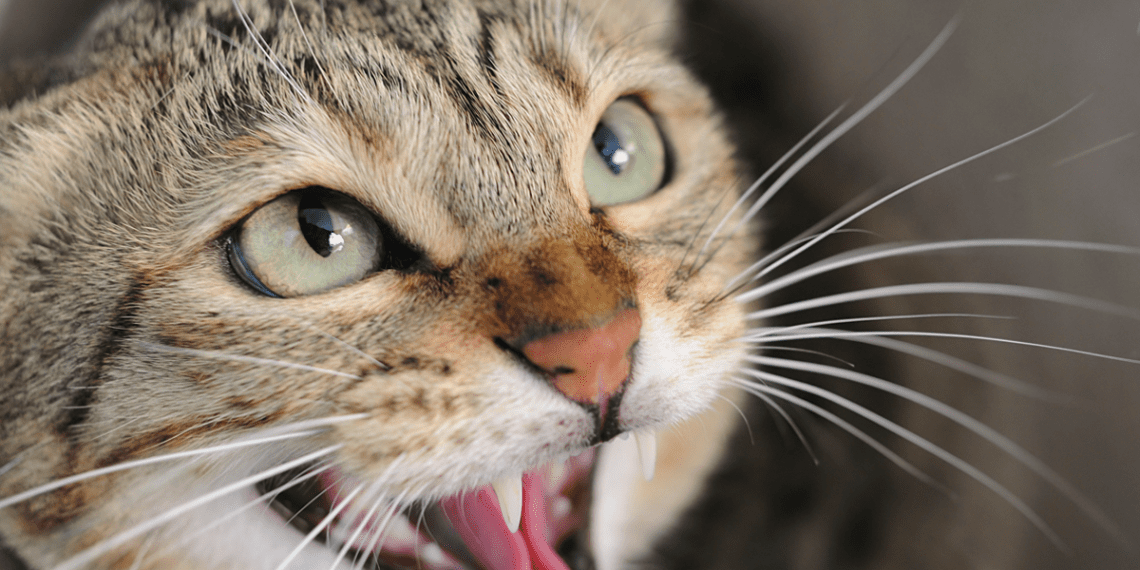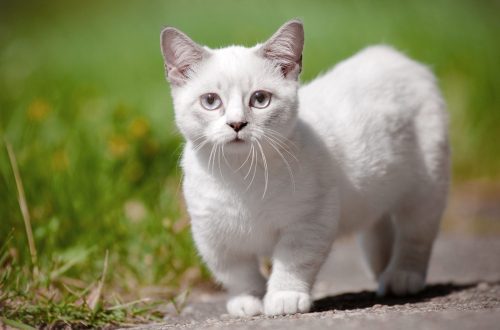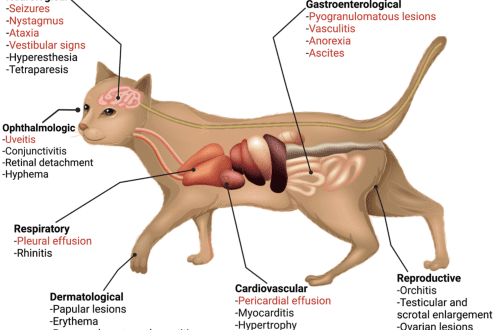
Stress and aggression in cats
Cats are unique animals. Their behavior is often not too predictable, and their independence can sometimes be envied. However, seemingly strong cats, able to hunt brilliantly, keep balance on different surfaces, jump much higher than their height, are sensitive creatures and are very prone to stress. How to understand the cause of stress and find ways to help a cat – we will consider in this article.
Contents
How to understand that a cat is in a stressful situation
It is not always obvious that the situation is uncomfortable for the cat. The owner should pay attention to the behavior of the pet and its emotional status.
Signs of stress:
- Nervousness.
- Aggression.
- Panic.
- Attempts to hide in a dark place.
- Refusal to feed or constant hunger.
- Excessive salivation.
- Going to the toilet in the wrong place.
- Eating or chewing on inedible objects.
- When frightened, it jumps high, such a fright can turn into a panic.
- It hunches its back, makes its hair grow, growls and hisses loudly, and can meow long and plaintively or aggressively. The usual pose for some frightening object incomprehensible to the cat, for example, a mask on the owner, a large bouquet of flowers. At the same time, kittens can take such a pose not only when frightened, but also in games.
- Unusual behavior – walks hunched over, pressed against walls, hides in corners, crawls or runs quickly, lowers his head, presses his ears, eyes are round with dilated pupils, stays in one tense position for a long time.
It is worth paying attention to the fact that the above signs can relate not only to stress, but also to pain, a poor condition that is caused by diseases of the internal organs. We recommend that you contact your veterinarian to clarify the cause and plan further tactics of action. But not everything is always obvious. The cat may be stressed but not show it.
How to Prepare for Expected Stress
If you know that the cat will have to experience stress in the near future, then it is best to prepare it in advance.
Possible Causes of Expected Stress
- The appearance of guests in the house. Strangers can not only scare a cat, but also provoke an attack.
- The appearance of a child in the family. The fuss of parents, the crying of a baby can shake the balance of a cat.
- Carrying. Yes, many owners know firsthand that a cat is not so easy to “pack” for transportation.
- Drive. Loud sounds, shaking, a lot of unfamiliar smells in the car, public transport can scare a cat.
- Visit to the vet. In addition to transportation, the stress of visiting the clinic is added. It can be minimized by calling a doctor at home, in case of not too serious conditions.
- Postoperative or other painful conditions, as well as flea infestation.
- Childbirth in a cat, especially those giving birth for the first time, can be very restless, and after childbirth they may refuse to feed the kittens.
- Visiting an exhibition or a groomer.
- Bathing a cat.
- Repair or rearrangement of furniture, the appearance of unusual objects in the house.
- The departure of the owner and, in connection with this, the moving of the cat to the zoo hotel or observation of another person at home. The second option, of course, is better for the cat, it remains in a more familiar environment.
- The appearance of a new animal home.
- Change of owner, especially in adulthood.
You can prepare for all these moments in advance: If there are no contraindications, then in advance you need to start giving sedatives on herbs or based on phenibut. Royal Canin Calm also has a mild soothing effect. For a cat to give birth, choose a cozy house, or a box with soft bedding, a reusable diaper is well suited – soft and warm, many cats prefer a closed space, such as a closet. Be responsible in choosing your carrier. It should be comfortable, spacious, well ventilated, and waterproof. The cat must be taught to carry in advance.
Unplanned stress
The owner of the cat must also be prepared for unplanned stressful situations, know how to behave so as not to get injured himself and not aggravate the situation with the pet. The main causes of unexpected stress:
- Unexpected pain. With severe pain, the cat may behave aggressively.
- Fight with another animal.
- Strong fright.
- Falling from height. Shock due to injuries.
The owner must lead very carefully, not to frighten or provoke the cat even more. If you see that your cat is feeling bad, uncomfortable, or you can tell by her body language that she is agitated and prefers not to interact with you at the moment, then do not impose your company on her, do not try to calm her down or take her on arms. Remain calm and offer your cat a dark, private space to cool her down safely and reduce aggression and stress levels.
- Babies and pets should never be left together unsupervised. Even if you know that your pet is very patient and friendly, it doesn’t take long for a child to hurt, as babies do not calculate the force of compression and can pull the cat’s tail, paws, and accidentally pull out the fur. An animal experiencing unexpected pain will defend itself as its self-preservation instinct tells it to, and may severely scratch and bite. It is impossible to scold and punish a cat for this. Explain to older children the rules of behavior with a cat: do not spank, do not chase if it is not in the mood for games and communication, teach how to pet and play with a cat, and how to hold it in your arms. And also explain where the cat is “in the house” and where no one touches it, for example, cat houses and beds.
- Do not try to stop a fight between cats with your hands or feet, it is very likely that you will encounter redirected aggression, and the cat will attack you instead of its opponent. You can separate the fighters by splashing water or throwing a noisy object nearby, such as keys or a jar of coins. If aggression is observed towards a new animal, separate them and introduce them gradually.
- In a state of panic, the cat rushes about randomly, jumping on walls and window sills, and immediately running away, crashes into objects. Often a simple game with the cat’s favorite packages leads to panic, when, for example, a package or a rope clings to the neck or paw, the cat runs, the object follows it, the cat is even more frightened.
- If the threat of an attack is great, the cat looks straight into your eyes, growls, jerks its tail sharply and approaches you – do not scream, wave your arms, throw something or beat the cat – this will bring the moment of attack closer rather than protect it from it. Be calm, ask someone to distract the cat with noise or water, for example. Leave the room where the aggressor is, give time to calm down.
Also very often in a state of stress, both unexpected and probable, cats clog under the sofa, bath or closet. No need to try in every possible way to get them out of there. The cat needs time. Place water, food and a tray near the shelter. Believe me, when you are not around and the potential danger, according to the cat, has passed, she will come out herself. Be patient.





